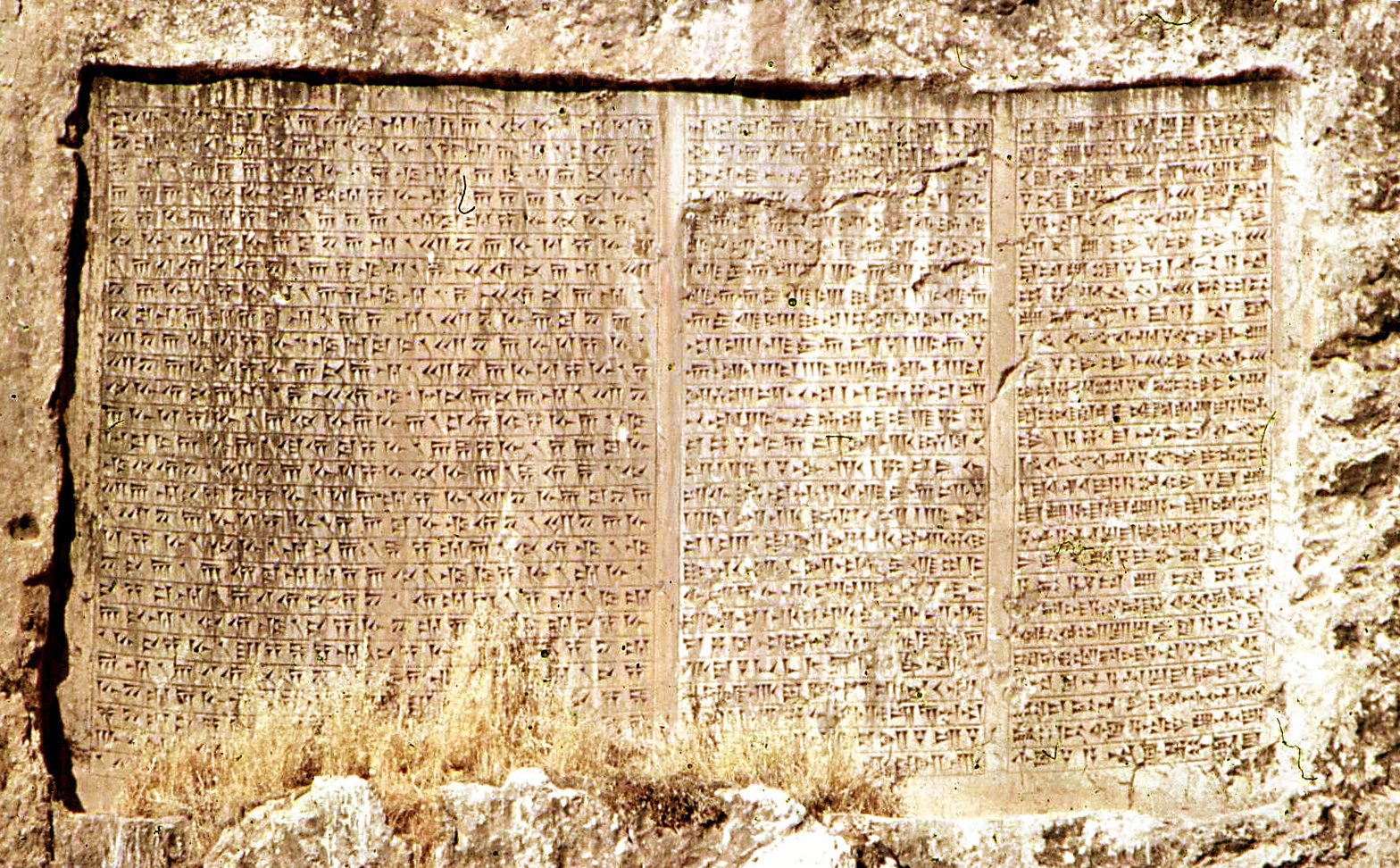The article below by F. Rachel Magdalene on the Achaemenid judicial and legal systems was originally published in the Encyclopedia Iranica on September 15, 2009 and last updated on April 17, 2012; this article is also available in print (Vol. XV, Fasc. 2, pp. 174-177). Kindly note that the images and accompanying descriptions inserted below do not appear in the original Encyclopedia Iranica article.
===========================================================
This article will address principally the sources of our knowledge of the judicial and legal system in the Achaemenid period, as well as the nature of the court system, which persons had standing to sue, and legal procedure. Substantive law will be discussed only briefly.
The sources
The legal materials of the Achaemenid period were written primarily in either the Neo-Babylonian
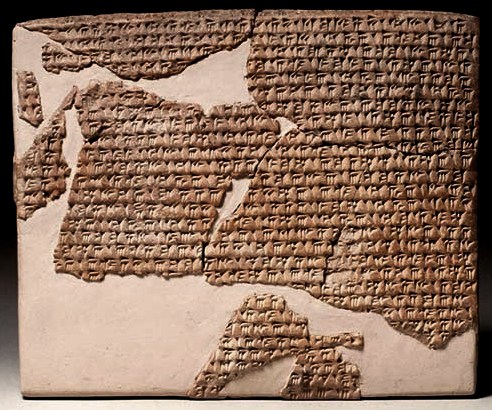
Inscription of Darius the Great from Susa (Source: Alborzagros in Public Domain).
Other legal materials exist that appear to be from non-private sources
We have discovered one broken tablet of the Neo-Babylonian Law Code, which lists various legal regulations (see, e.g., Borger, pp. 92-95). This particular tablet may be a school tablet that excerpts a larger text. The document addresses claims for compensation, marriage law, and inheritance provisions. Scholars disagree on the nature and legal effect of all the so-called law codes of the ancient Near East and early Greece and Rome (Wells, 2008, pp. 223-43). They may be prescriptive, authoritative statutory law in the modern sense (Ries, pp. 739-43); descriptive legal treatises that pull together and organize real law for pedagogical purposes (Kraus, pp. 283-96; Westbrook, 2000, pp. 33-47); or non-authoritative theoretical treatises more in the nature of wisdom than law (Fitzpatrick-McKinley). This author takes the second position, noting: (1) the close relationship between the literary characteristics of various omen texts and the “law codes” (see, e.g., Bottéro, pp. 409-44; Fincke, pp. 131-47); and (2) the existence of other scholastic documents that concern legal materials (see, e.g., the lexical series ḪAR(UR5).RA and model law suits and contracts written on school tablets; all discussed further in Oelsner et al., p. 914). Moreover, we have records containing royal edicts (dātu ša šarri) (e.g., VAS 6, no. 99 = NRVU, no. 700:10) and administrative orders. The royal edicts were not legislation but a royal decree or command (Oelsner et al., p. 911). We also have letters and a few literary works that reveal legal information.
One must note, however, that a number of factors give rise to the question of whether the cuneiform material is truly representative of the law in all geographic regions of the empire across the entire Persian period. These include: (1) the lack of Aramaic legal materials from the center of the Empire; (2) the Persian administration’s policy to continue, in the periphery, the legal and administrative structures in place, adding only a layer of Persian administration; (3) the possible codification and unification of law by Darius I; (4) the vagaries of archeology; and (5) the fact that large amounts of this legal corpus remains unpublished. Nonetheless, the majority of scholars assert that we do currently have a representative sample of law from the Achaemenid period upon which we may make valid legal historical assertions (e.g., Dandamaev and Lukonin, p. 121).
Legal and judicial structures
All legal authority ultimately derived from the gods, who entrusted it to the king. The king, therefore, established, maintained, and defended justice (Otto, p. 268). He was not above the law but was, rather, an integral part of it. No evidence for a legislative body exists. Judicial administration was ultimately under the authority of the king, and texts document his supervisory role (see, e.g., CT 22, p. 231), although the Achaemenid kings rarely adjudicated individual cases. The courts were sometimes headed by officials, entitled sartennu or sukkallu. A number of texts testify to the existence of a system of court management, all of which contain the phrase ḫīṭu ša X šadādu (zabālulu), where X is the king or other significant royal official (e.g., AnOr 8, no. 45; YOS 6, no. 108; and Magdalene, forthcoming). Violation of orders related to court management would bring upon the offender judicial sanctions.
Courts sat in panels and were derived from various classes of persons, including judges (dayyānu), diverse state officials, temple officials, and various temple and lay assemblies. The courts seemed to be divided into two major divisions, each with different jurisdictional powers, secular courts and temple courts, although their available legal procedures seem to be identical (Holtz, pp. 290-91). Temple courts heard cases where they had subject matter jurisdiction and either in personam or in rem jurisdiction. In such cases, at least one temple official and one royal official had to be on the court. Secular courts had broad power to hear cases, adjudicating all cases that the temple court could not hear. They had, additionally, appellate jurisdiction over temple court decisions (Magdalene, 2007, p. 65). Suits might have been heard in a “house of judgement” (bīt dīni), a “house of judges” (bīt dayyānī), or any number of other settings, including city and temple gates, open public areas, and even storehouses.
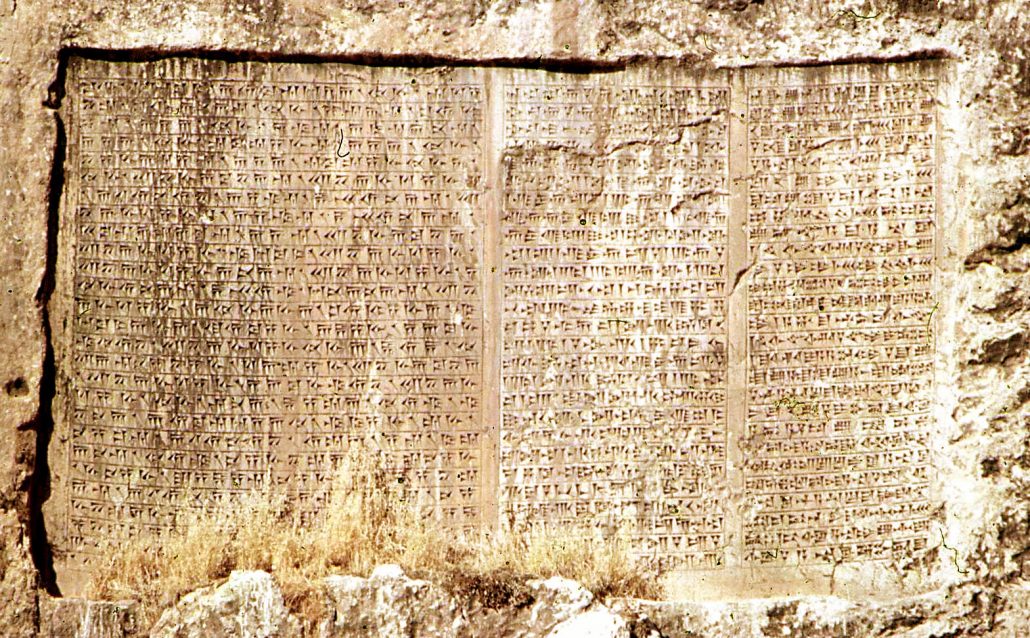
The trilingual inscription (Old Persian, Babylonian and Elamite) of Xerxes in Van, Eastern Turkey (Source: John Hill in Public Domain).
Standing to sue and legal procedure
The Achaemenid legal system was an inquisitorial system of adjudication as opposed to an adversarial system. Inquisitorial systems are marked by three characteristics: (1) a higher degree of cooperation between the parties than in adversarial systems; (2) judges who are more likely to be involved in developing the evidence at trial; and (3) the requirement of defendant testimony, even where such might incriminate the defendant (Magdalene, 2007, pp. 47-48, n. 70; 65-66, 78; cf. Jackson, pp. 161-62). Litigation in the period had highly sophisticated, but quite flexible, rules of procedure and evidence. The system was not only flexible, but somewhat fluid: one cannot always clearly delineate pre-trial, trial, and (and even in some cases) post-trial phases of litigation from the records, which are often quite brief—sometimes to the point of being cryptic. Various phases of trial could be recorded on different tablets, obscuring our understanding of a given case. Only by reading a large number of tablets does the entire adjudicatory system emerge (Holtz, pp. 27-29).
Royal officials had standing to sue for the king. Temples had standing to sue in the secular courts regarding their interests and were typically represented by senior temple officials. Free men always had standing to sue. Heads of households would typically represent the legal interests of their household members. Women had standing in cases involving significant inner-family disputes, specifically their dowries, where their legal status or rights were at issue (Roth, pp. 387-400), and, when independent, to protect their business interests just like men. Slaves and former-slaves had standing in regard to their status as slave or freeman. In criminal matters, all persons of whatever status could notify the court of alleged criminal activity, lodge an accusation, and testify in the matter.
The basic phases of litigation include, in their typical order of occurrence: (1) the accusation by the plaintiff; (2) a demand upon the defendant, which might be informal (private) or formal (before judicial agents or the assembly); (3) the investigation by the court who would hear the case, other persons with judicial power, or their agents (depositions could be taken during such and shipped to another location for trial); (4) the summons upon the defendant, which might include arrest and seizure of property related to the case, if not done prior to the investigation; (5) the defendant’s declaration or oath regarding the matter (where the defendant claimed that a third-party was actually responsible, he or she might be joined to the case; or a defendant counterclaim against the plaintiff might also be permitted at this time); (6) a second accusation, the testimony of a corroborating third-party witness, or the submission of some documentary or physical evidence; (7) the taking of any additional relevant evidence, including expert witness testimony, circumstantial evidence, and hearsay (Oelsner et al., p. 922); (8) the verdict; (9) an appeal, if taken; and (10) the execution of the verdict.
Judicial relief included: compensation in silver or goods, specific performance, orders of eviction, injunctions (both temporary and permanent), capital punishment, criminal forfeiture of defendants’ property, certain forms of corporal punishment, as well as payments in lieu of corporal punishment. One NB trial record apparently refers to a payment in lieu of blood revenge (Wunsch, 2002, p. 356). In the case of compensation to the victim, we find damage multiples of one, two, three, ten, and thirty. The thirty-fold penalty is clearly used only in the case of theft of, or damage to, temple property (Wells, 2004, p. 114). Penalty assessment or relief granted depended on the nature of the harm, the level of culpability, and the specifics of the matter at hand. Occasionally, the court found for the defendant and assessed a penalty for false suit against the plaintiff. Settlement of the claim, which might be reviewed and sanctioned by either the court or the public assembly where necessary, was possible at any stage of the proceedings. Sometimes verdict or execution documents included a court-ordered prohibition upon one or both of the parties not to sue on the claim again. Releases of liability are observed in execution documents, as well.
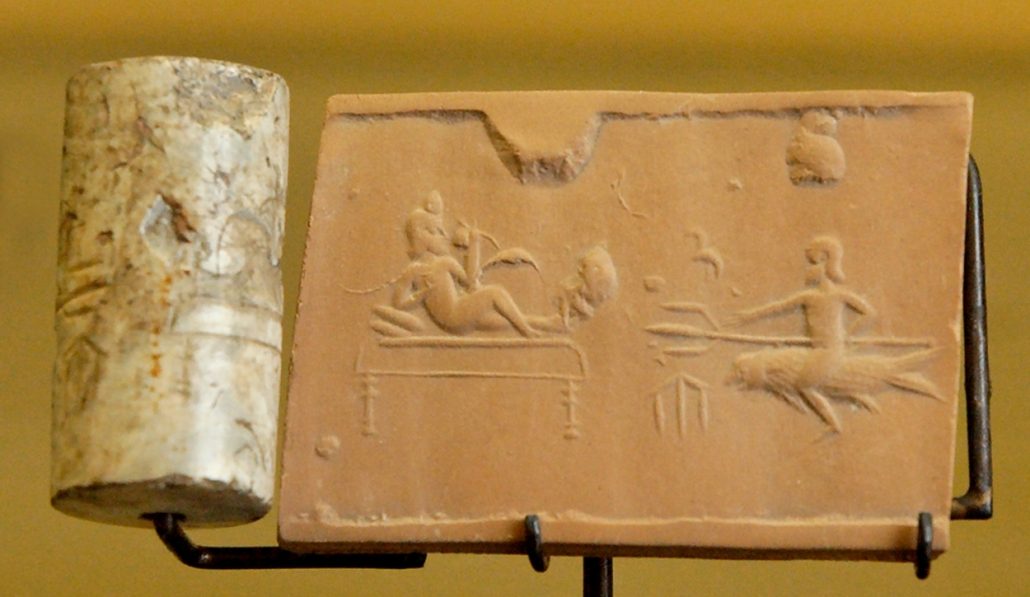
Achaemenid Cylinder seal excavated by the expedition of Marcel Dieulafoy in 1885–1886, and now housed at the Louvre Museum (Department of Oriental Antiquities, Sully, ground floor, room 14) (Source: Public Domain).
This system generally continues a long-standing ancient Near Eastern tradition of trial procedure. Only three innovations appear in the NB litigation documents. They are, however, of utmost importance. First, certain procedures are streamlined. For instance, the pre-trial complaint and answer requirement of the Old Babylonian period was eliminated (Magdalene, 2007, pp. 67-68). Second, a significant movement toward rational evidence can be seen in numerous records (Wells, 2004, pp. 108-30). In prior periods, dispositive oaths and ordeals were used to resolve close cases. Typically, the defendant was ordered by the court to submit to the oath or ordeal before the gods. If done, the case was settled in his or her favor. Conditional verdict documents were often issued by the court indicating that, if the defendant did not take the oath, he or she would be guilty. During the NB and Achaemenid periods, oaths were rarely court ordered or taken before the gods. Moreover, when an oath was not so executed, it did not have dispositive effect. Conditional verdicts reflect, instead, the need for additional rational evidence, such as a second accusation or the testimony of a third-party witness. Third, women in earlier periods of ancient Near Eastern history never served as recording witness on legal texts. Scribes in the Achaemenid period, however, recognized the presence of a woman as a recording witness by noting that the legal event took place “in the presence of ” (ina ašābi ša) fPN (Westbrook, 2005, pp. 144-46). Although this change is not as radical as the others, it does point to an increased status for women (contra, Koschaker, pp. 201-9). (For further on standing and litigation procedure in this period, see primarily, Holtz; Magdalene, 2007, pp. 55-94; and Oelsner et al., pp. 911-24.)
Substantive law
The substantive law, that law which determines an individual’s societal status and the rights and duties owed to others within the society, also follows well established ancient Near Eastern traditions, with just a few innovations (Westbrook, 2005, pp. 134-35). The major areas of law, such as contract law, family law, property law, inheritance, torts, criminal law, and so forth, show little philosophical or conceptual innovation in this period. In fact, the major facets of private law are stable from the third millennium onward in the ancient Near East, sharing a common legal tradition much in the manner of modern Common Law systems or Continental systems. Nonetheless, a given society within that shared meta-tradition would shape the particulars of the law in its application. As a modern example, we might take the law regarding driving under the influence of alcohol. The same is true in the ancient world regarding such things as contract law, family law, and criminal law. According to R. Westbrook (2005, pp. 135-45), the Persians applied traditional substantive law in extremely rich, flexible, and innovative ways, particularly in the area of the law related to economic relationships—which seem to be growing in complexity with the financial dealings of these large wealthy families. Another such example can be found in the area of marriage law, where dowries served the same purpose as in other ancient Near Eastern societies, but where we can also observe an increasing tendency to protect the family’s wealth from a potentially financially inept or irresponsible son-in-law in dowry documents. In secured transactions, we no longer see the use of debtor self-pledge or sale, but only the continued use of the pledging and sale of both children and slaves.
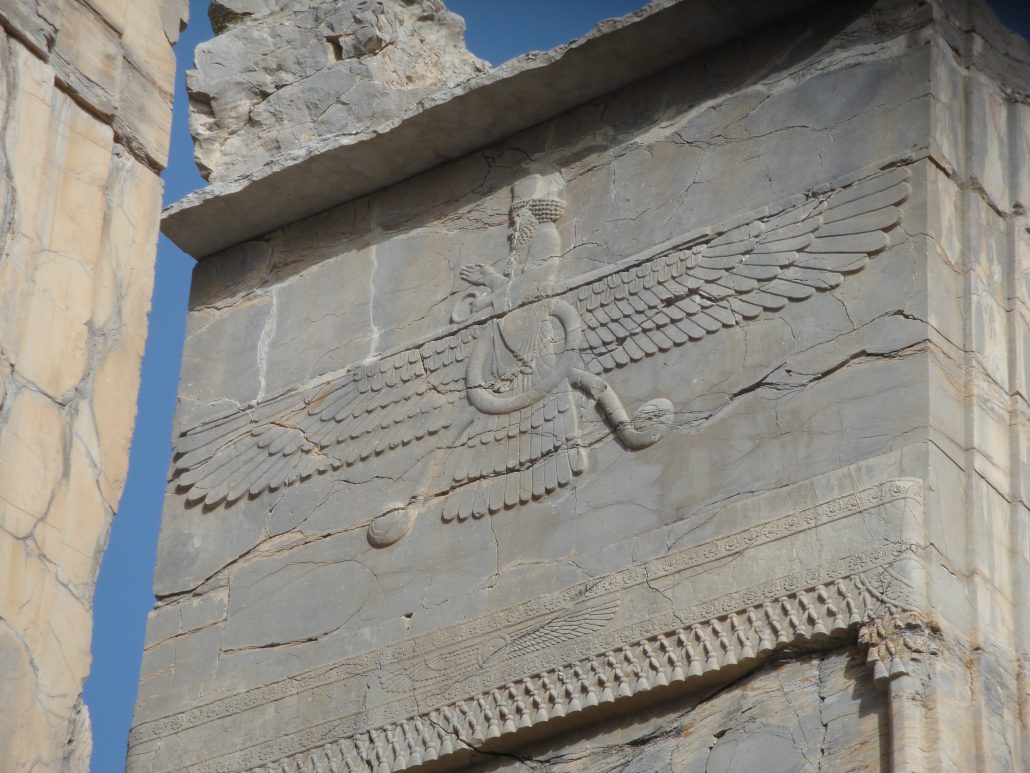
The Fravahar symbol depicted at Persepolis (Source: Sahand Ace in Public Domain).
One significant Achaemenid advance in the substantive law seems, according to B. Wells, F. R. Magdalene, and C. Wunsch (Wells et al.), to be in the area of administrative law. The legal documents reflect that the administrative infrastructure was both expanding and organizing throughout the NB and Persian Empires to cope with increased areas of domination, populations, and transactional complexity. This brought with it an awareness of the need to regulate the administrative functions of officials and individuals in service to the king and temple. Not all the known legal documents that contain the phrase ḫīṭu ša X šadādu (zabālulu), as mentioned above, relate to court management. Rather, in total, they address a broad range of administrative responsibilities (see, e.g., British Museum no. 33121; BIN 1, no. 169; YNER 1, no. 2). These texts share two salient features beyond their terminology: (1) a responsibility is owed by PN1 (an assignor) to PN2 (a third-party authority) that is being delegated to PN3 (an assignee); and (2) they indicate that a penalty will be imposed if and when PN3 (the assignee) violates his assumed administrative duty. This may well be the beginnings of administrative law as a substantive area of law. (For further on the substantive law in this period, see primarily, Oelsner et al., pp. 924-74; and Westbrook, 2005, pp. 133-46.)
In sum, the law of the Achaemenid period reflects both continuity with the ancient legal traditions of the greater region, while being both quite creative and flexible in order to attend to changing conditions and new concerns.
Bibliography
Sources. [AnOr 8-9] A. Pohl, Neubabylonische Rechtsurkunden aus den Berliner Staatlichen Museen, 2 vols., Analecta orientalia 8–9, Rome, 1933-34.
[BIN 1] C. E. Keiser, Letters and Contracts from Erech Written in the Neo-Babylonian Period, Babylonian Inscriptions in the Collection of James B. Nies 1, New Haven, 1917. [CT 22] R. C. Thompson, ed., Cuneiform Texts from Babylonian Tablets in the British Museum, Cuneiform Texts from Babylonian Tablets in the British Museum 22, London, 1906. [NRVU] M. San Nicolo and A. Ungnad, Neubabylonische Rechts- und Verwaltungsurkunden: übersetzt und erläutert, vol. 1.Rechts- und Wirtschaftsurkunden der Berliner Museen aus vorhellenistischer Zeit, Leipzig, 1935.
[VAS 4 and 6] A. Ungnad, Neubabylonische Urkunden, 2 vols. Vorderasiatische Schriftdenkmäler der Koniglichen Museen zu Berlin 4 and 6, Leipzig, 1907–08. [YNER 1] D. B. Weisberg, Guild Structure and Political Allegiance in Early Achaemenid Mesopotamia, Yale Near Eastern Researches 1, New Haven, 1967. [YOS 6] R. P. Dougherty, Records from Erech: Time of Nabonidus (555-538 B.C.), Yale Oriental Series, Texts 6, New Haven, 1920.Studies
R. Borger, “Die neubabylonischen Gesetze,” in Texte aus der Umwelt des Alten Testaments, vol. 1/3: Rechtsbücher, ed. O. Kaiser, Gütersloh, 1982, pp. 92-95.
J. Bottéro, “Le ‘Code’ de Hammu-rabi,” Annali della Scola Normale Superiore di Pisa 12, 1982, pp. 409-44; repr. as “The ‘Code’ of Ḫammurabi,” in Mesopotamia: Writing, Reasoning, and the God, tr. Z. Bahrani and M. Van de Mieroop, Chicago, 1992, pp. 33-47.
M. A. Dandamaev and V. G. Lukonin, The Culture and Social Institutions of Ancient Iran, ed. and tr. P. L. Kohl, Cambridge, 1989.
A. Fitzpatrick-McKinley, The Transformation of Torah from Scribal Advice to Law, Journal for the Study of the Old Testament, Supplement Series 287, Sheffield, 1999.
J. C. Fincke, “Omina, die göttlichen ‘Gesetze’ der Divination,” Jaarbericht Ex Oriente Lux 40, 2006-2007, pp. 131-47.
S. E. Holtz, “Neo-Babylonian Decision Records and Related Documents: Typological, Procedural and Comparative Aspects,” Ph.D. diss., Univ. of Pennsylvania, 2006, published as Neo-Babylonian Court Procedure, Cuneiform Monographs 38, Leiden, 2009.
B. S. Jackson, “Narrative Models in Legal Proof,” in Narrative and the Legal Discourse: A Reader in Storytelling and the Law, ed. D. R. Papke, Liverpool, 1991, pp. 158-78, 333-35.
M. Jursa, “The Transition of Babylonia from the Neo-Babylonian Empire to Achaemenid Rule,” Proceedings of British Academy 136, 2007, pp. 73-94.
P. Koschaker, Babylonisch-assyrisches Bürgschaftsrecht: Ein Beitrag zur Lehre von Schuld und Haftung, Leipzig, 1911.
F. R. Kraus, “Ein zentrales Problem des altmesopotamiscchen Rechtes: Was ist der Codex Hammu-rabi?” Geneva, N.S. 8, 1960, pp. 283-96.
F. R. Magdalene, On the Scales of Righteousness: Neo-Babylonian Trial Law and the Book of Job, Brown Judaic Studies 348, Providence, R.I., 2007.
Eadem, “Administration of the Judiciary: Managing Local Courts in the Persian Period,” in City Administration during the Neo-Babylonian Empire, ed. C. Wunsch, Babel und Bibel, Winona Lake, Ind., forthcoming. J. Oelsner, B. Wells, and C. Wunsch, “Neo-Babylonian Period,” in A History of Ancient Near Eastern Law, ed. R. Westbrook, 2 vols., Handbook of Oriental Studies 72, Leiden, 2003, pp. 2:911-74.
E. Otto, “Neue Aspekte zum keilschriftlichen Prozeßrecht in Babylonien und Assyrien,” Zeitschrift für altorientalische und biblische Rechtsgeschichte 4, 1998, pp. 263-83.
L. Pearce and C. Wunsch, Into the Hands of Nebuchadnezzar: Judean and Other Exiles in Babylonian Texts, Lantham, Md., forthcoming. G. Ries, Review of The Law of Testimony in the Pentateuchal Codes by B. Wells, in Zeitschrift der Savigny-Stiftung fur Rechtsgeschichte (Romanistische Abteilung) 125, 2008, pp. 739-43.
M. T. Roth, “fTašamētu-damqat and Daughters,” in Assyriologica et Semitica: Festschrift für Joachim Oelsner anläßlich seines 65.
Geburtstages am 18. February 1997, ed. J. Marzahn and H. Neumann, Alter Orient und Altes Testament 252, Münster, 2000, pp. 387-400.
M. W. Stolper, Entrepreneurs and Empire: The Murašû Archive, The Murašû Firm, and Persian Rule in Babylonia, Uitgaven van het Nederlands Historisch-Archaeologisch Instituut te Istanbul 54, Leiden, 1985.
C. Waerzeggers, “The Babylonian Revolts against Xerxes and the ‘End of Archives,’” Archiv für Orientforschung 50, 2003/2004, pp. 150-73.
B. Wells, The Law of Testimony in the Pentateuchal Codes, Beihefte zur Zeitschrift für altorientalische und biblische Rechtsgeschichte 4, Wiesbaden, 2004.
Idem, “What Is Biblical Law? A Look at Pentateuchal Rules and Near Eastern Practice,” Catholic Biblical Quarterly 70, 2008, pp. 223-43.
B. Wells, F. R. Magdalene, and C. Wunsch, He Shall Bear Guilt: Fault, Responsibility, and Administrative Law in Late Babylonian Legal Documents, forthcoming. R. Westbrook, “Codification and Canonization,” in La codification des lois dans l’antiquité: Actes du Colloque de Strasbourg 27–29 Novembre 1997, ed. E. Lévy, Travaux du Centre de Recherche sur le Proche-Orient et la Grèce antiques 16, Paris, 2000, pp. 33-47.
Idem, “Reflections on Neo-Babylonian Law” (review article of Urkunden zum Ehe-, Vermögens-, und Erbrecht aus verschiedenen neubabylonischen Archiven by C. Wunsch), NIN: Journal of Gender Studies in Antiquity 4, 2005, pp. 133-46.
C. Wunsch, Judeans by the Waters of Babylon: New Historical Evidence in Cuneiform Sources from Rural Babylonia, Babylonische Archive 3, Dresden, forthcoming.
Eadem, ed., Mining the Archives: Festschrift for Christopher Walker on the Occasion of his 60th Birthday, 4 October 2002, Babylonische Archive 1, Dresden, 2002.

